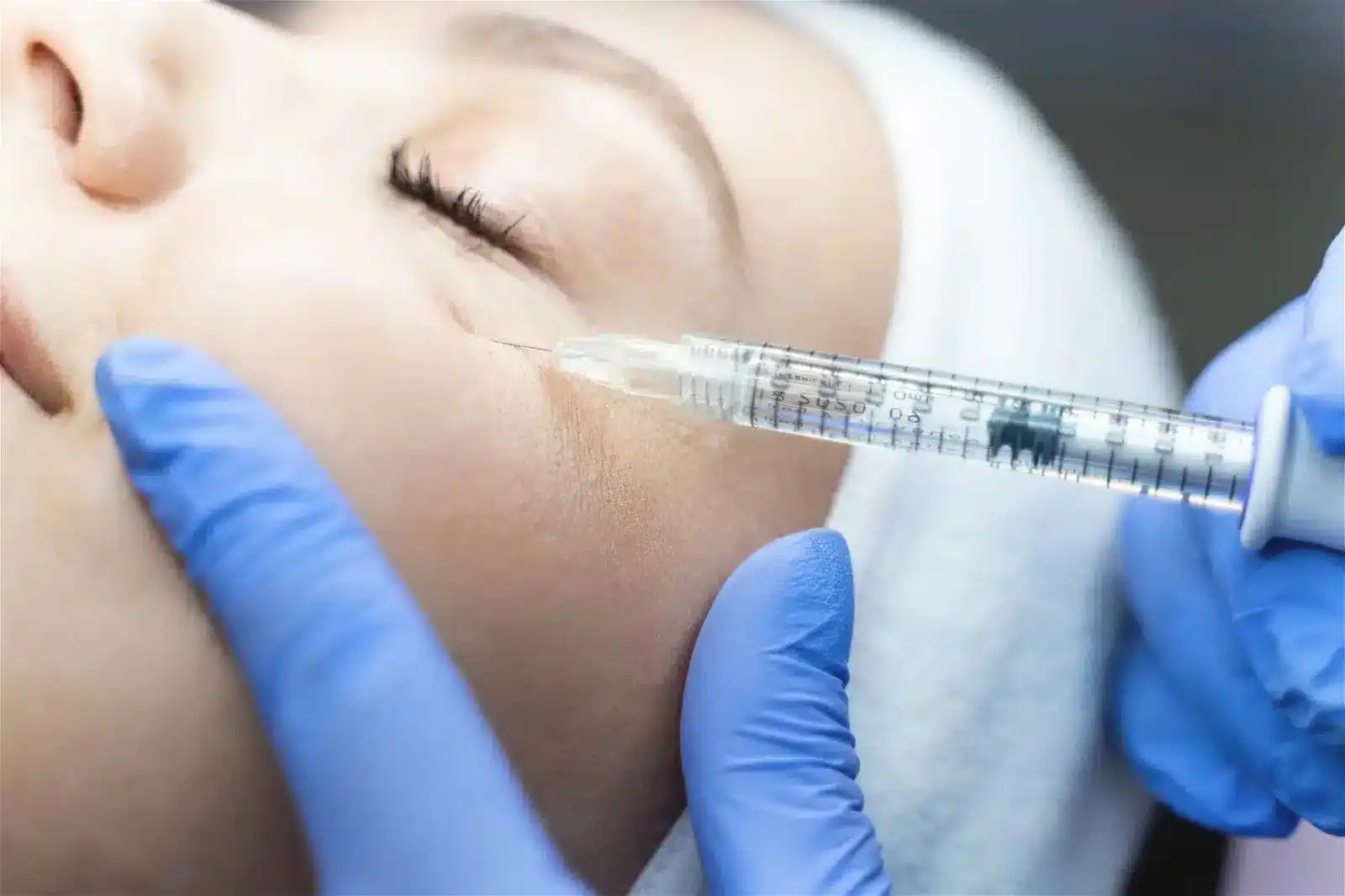
Banish Dark Circles: The Magic of Undereye Fillers
David Fuller
Last Updated On: October 15, 2024
As a medical professional, you likely know how frequently patients complain about dark circles under their eyes. No one wants to appear sleep-deprived when they’re well-rested and ready to tackle the day. These undereye shadows often catch people by surprise, and they may not initially attribute them to the natural aging process or genetic predisposition. It usually takes some time before individuals seek specialist assistance to address this common cosmetic issue.
When dealing with dark circles, the approach varies depending on their underlying causes. Solutions range from surgical procedures like blepharoplasty to topical remedies such as eye creams. Today, we’ll focus on undereye fillers, one of the most common methods of dealing with dark circles, and explore how they can be a game-changer for patients striving to achieve their aesthetic goals.
Why Do Dark Circles Appear in the First Place?
As we get older, collagen levels decrease, and the skin becomes even thinner, making it easier for blood vessels to show through. This can result in the blood vessels becoming more obvious and lead to the appearance of dark circles. As we get older, our faces also have a tendency to lose volume and fat.
This volume loss can lead to hollowing under the eyes, creating shadows and making dark circles more prominent. Due to the fat loss, tear trough hollows become more pronounced, deepening the shadows and contributing to the appearance of dark circles. Using undereye fillers, also known as tear through fillers, is ideal for all these situations. But there are also other reasons why dark circles may appear. The most common ones are:
- Genetics: If the patient’s parents or close family members have dark circles, they may be genetically predisposed to them.
- Fatigue and lack of sleep: Sleep deprivation or poor sleep quality can cause the skin to become pale, making blood vessels and dark tissues beneath the skin more apparent.
- Dehydration: Insufficient hydration can lead to a sunken appearance, making dark circles more noticeable.
- Hyperpigmentation: Excess melanin production can result in darkening of the skin under the eyes.
- Sun exposure: Prolonged exposure to the sun’s harmful UV rays can trigger melanin production, leading to dark circles.
- Medical conditions: Thyroid problems and anemia are just two examples of conditions that can make the eyes look tired.
- Lifestyle factors: Smoking, alcohol, and a poor diet can all cause the appearance of undereye dark circles.
For some, undereye filler treatment may not be the best choice, but it can be effectively combined with other options. Therefore, each patient’s case must be carefully assessed, and the underlying reasons for the appearance of dark circles must be understood before appropriate treatments can be determined.
What Is an Undereye Filler, and How Does It Work?
Undereye dermal fillers are cosmetic products that address issues such as dark circles, hollows, and wrinkles underneath the eyes. The procedure involves the injection of dermal fillers, typically hyaluronic acid-based (HA) based products, into the undereye area.
HA is a naturally occurring substance in the skin that helps maintain hydration and volume. When injected, HA attracts and retains water molecules, resulting in a plumping effect that restores volume to the area while promoting collagen and elastin production.
HA fillers are fully biocompatible, meaning they are well-tolerated by the body and don’t cause adverse reactions. They are also biodegradable, meaning they naturally break down over time within the body. Yes, this means that they are a temporary solution, but depending on the brand used (Juvederm, Restylane, etc.) and the individual case, they can last from 6 to 18 months. In cases of undereye filler migration, the HA fillers can be broken down by injecting the hyaluronidase enzyme, which breaks down the filler and allows the human body to metabolize whatever is left.
It works by filling in hollowed undereye areas, reducing the appearance of dark circles by minimizing the shadowing effect, and smoothing fine lines and wrinkles. This plumping effect can create a more youthful and refreshed appearance by restoring lost volume and improving the overall contour of the undereye area. Because fillers add volume to the area, they can also deal with mild to moderate skin sagging.
Benefits of an Undereye Filler
There are several benefits to using fillers to treat undereye dark circles when compared to other alternatives:
- Reduced wrinkles: An undereye filler can reduce wrinkles and fine lines, making the undereye area look more rested and youthful.
- Non-surgical: It is a non-surgical cosmetic procedure, meaning there’s no need for invasive surgery or extended post-procedure downtime.
- Quick procedure: The treatment is usually quick, often taking less than an hour, making it convenient for individuals with busy schedules.
- Minimal recovery time: Patients can typically resume their daily activities shortly after the procedure, with minimal downtime or discomfort.
- Customizable results: Skilled practitioners can customize the filler treatment to achieve natural-looking results tailored to the patient’s specific needs and desires.
- Minimal side effects: When administered by a qualified professional, undereye fillers typically have minimal side effects, such as swelling or bruising, and they tend to be temporary and easily manageable.
Who’s a Good Candidate for Tear Trough Filler?
Patients who are good candidates for dermal fillers tend to have specific conditions related to the appearance of their undereye area. They often exhibit hollow or sunken tear troughs, which create a depressed or indented look. These candidates may also have dark circles exacerbated by a volume loss in the undereye region. The fillers effectively address these issues by adding volume to the undereye area and reducing the shadowing that contributes to dark circles.
Further adding to the above, individuals considering use of under-eye fillers due to existing mild to moderate fine lines and wrinkles in that area of the face, should be aware these fillers can effectively address common signs of aging such as these. It’s essential that patients keep realistic expectations, understanding that fillers provide an improvement though they may not completely eliminate dark circles or other cosmetic under-eye concerns(excess skin or prominent eye bags).
Patients with good skin elasticity tend to achieve better results because elastic skin adapts well to the changes induced by the filler. However, a consultation with a qualified practitioner is crucial in determining if the patient’s specific under-eye concerns are suitable for under-eye filler treatment, tear trough filler treatment (one of the under-eye filler alternatives), or possibly even a combination of multiple procedures.
Conclusion
As medical professionals, it’s imperative to recognize that not all cases of dark circles are the same. A careful assessment of each patient’s condition is vital, considering factors such as skin elasticity and the underlying causes of dark circles. Under-eye fillers, when used judiciously and in conjunction with other treatments where necessary, can be a transformative tool in helping patients achieve their aesthetic goals and regain a youthful, refreshed appearance.
FAQ
How long do fillers last under the eyes?
Undereye fillers can last from 6 to 18 months, depending on the brand and the individual case.
What is the downside of the undereye filler?
Its effects are temporary, and common side effects can include swelling, bruising, and hyperpigmentation. Luckily, these are also short-lived and easy to manage if they occur.
Is undereye filler high-risk?
Just like any medical procedure, these fillers carry a measure of risk, but the associated side effects and complications are both less common and far less severe compared to surgical alternatives.
Reference:
- Jung H. Hyaluronidase: An overview of its properties, applications, and side effects. Arch Plast Surg. 2020 Jul;47(4):297-300. doi: 10.5999/aps.2020.00752. Epub 2020 Jul 15. PMID: 32718106; PMCID: PMC7398804.
- Urdiales-Gálvez F, Farollch-Prats L. Management of Tear Trough with Hyaluronic Acid Fillers: A Clinical-Practice Dual Approach. Clin Cosmet Investig Dermatol. 2021 May 11;14:467-483. doi: 10.2147/CCID.S301117. PMID: 34012281; PMCID: PMC8127324.
- Sharad J. Dermal Fillers for the Treatment of Tear Trough Deformity: A Review of Anatomy, Treatment Techniques, and their Outcomes. J Cutan Aesthet Surg. 2012 Oct;5(4):229-38. doi: 10.4103/0974-2077.104910. PMID: 23378704; PMCID: PMC3560162.
- Jiang J, Wang X, Chen R, Xia X, Sun S, Hu K. Tear trough deformity: different types of anatomy and treatment options. Postepy Dermatol Alergol. 2016 Aug;33(4):303-8. doi: 10.5114/ada.2016.61607. Epub 2016 Aug 16. PMID: 27605904; PMCID: PMC5004220.
- Funt D, Pavicic T. Dermal fillers in aesthetics: an overview of adverse events and treatment approaches. Plast Surg Nurs. 2015 Jan-Mar;35(1):13-32. doi: 10.1097/PSN.0000000000000087. PMID: 25730536.
Products
Cart
Log In
Newsletter
Subscribe for exclusive offers and updates on new arrivals
Share feedback at:
Working Hours
MON - SUN 9AM to 6PM EST
The Most Popular Brands
Med Supply Solutions
Support
Secure checkout is guaranteed with full adherence to PCI DSS payment standards.
Products listed here are guaranteed authentic and manufacturer-sourced.
Pay easily with trusted providers


Copyright 2025. Med Supply Solutions